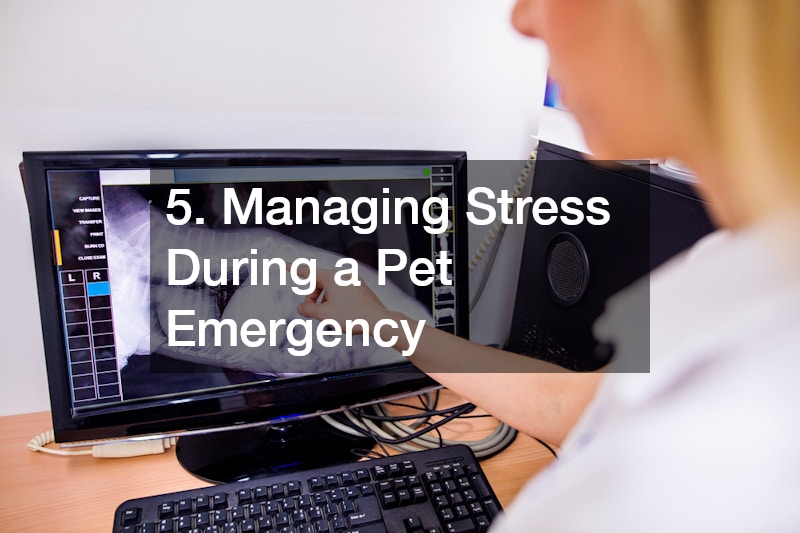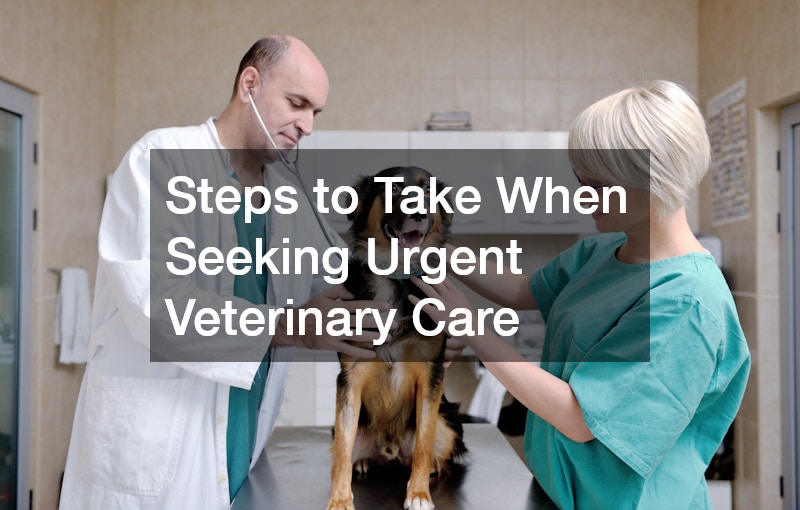
In the midst of a pet emergency, knowing the appropriate steps to take can make all the difference in ensuring your pet receives the necessary care swiftly and effectively. By preparing in advance and staying informed, pet owners can significantly enhance the outcome of such critical situations with urgent veterinary care.
1. How to Identify a Pet Emergency
1.1 Recognizing Common Urgent Symptoms
Recognizing the signs of a pet emergency is crucial in getting the appropriate care your companion needs. Common symptoms include excessive vomiting, difficulty breathing, and sudden collapse, which demand immediate attention.
Additionally, noticeable changes in behavior, such as lethargy or unresponsiveness, indicate a possible emergency. Understanding the nuances of your pet’s normal behavior allows you to better identify when something is amiss.
For some breeds, certain symptoms might be more prevalent; thus, recognizing what is common yet critical can make all the difference. Regular veterinary check-ups can help in understanding any inherent risks your pet might face.
1.2 Assessing the Severity of the Situation
Quickly assessing the severity of your pet’s condition can help determine if immediate action is necessary. An objective evaluation can save time and ensure that you are providing the best care possible during an emergency.
Observing your pet’s vital signs, such as their heart rate and respiratory rate, can offer insight into their condition. If you detect anything out of the ordinary, promptly seeking professional advice can be key.
Knowing how to handle minor emergencies at home can sometimes alleviate stress and prevent certain situations from worsening. However, recognizing when professional intervention is imperative is an important skill for any pet owner.
2. Preparing for a Veterinary Emergency
2.1 Creating a Pet Emergency Kit
Having a prepared pet emergency kit can be a lifesaver in critical situations. A well-stocked kit should include basic first aid supplies, medical records, and contact information for your vet.
Include items like gauze, antiseptic wipes, a digital thermometer, and a leash or muzzle if necessary. Ensuring all items are easily accessible can expedite the first response actions during an emergency.
Consider updating and revisiting your kit every few months, adding any medications or items specific to your pet’s needs. This practice ensures that nothing expires or is missing when you need it most.
2.2 Understanding Your Veterinary Options
Exploring different emergency veterinary care options can aid significantly during a time of crisis. It’s vital to familiarize yourself with local emergency clinics and their specific services beforehand.
Finding a clinic that is open 24/7 can be crucial for situations that arise beyond regular office hours. Knowing the location and the services offered by nearby clinics can trim down crucial decision-making time.
Ultimately, each option should be evaluated based on factors such as proximity, reputation, and specialization. Ready knowledge about these clinics ensures your pet receives the best care tailored to their situation.
3. Contacting Emergency Veterinary Services
3.1 When to Call Your Veterinarian vs. Emergency Clinic
Sometimes, determining if you should contact your regular veterinarian or an emergency clinic can be challenging. For ongoing issues or less severe symptoms, a call to your regular vet can be appropriate.
Conversely, emergency clinics are better equipped for acute, life-threatening conditions that require immediate intervention. Understanding the distinction between the two and having both contacts readily available is wise.
If in doubt, calling either service and explaining the situation can guide the proper course of action. Prioritizing swift and knowledgeable responses eases the path to appropriate care.
3.2 Providing Vital Information to the Vet
Once you’ve decided to contact a veterinary professional, clear and concise communication is key. Providing vital information such as your pet’s symptoms, age, and any recent illnesses or medications can expedite the diagnosis.
Having your pet’s medical history and identification details at hand is helpful, as is staying calm and focused during your interaction. This preparation can significantly influence the efficiency of emergency care.
Remember, clarity and brevity in your communication are paramount. Understanding the importance of sharing critical information promptly ensures the veterinary team is best prepared upon your arrival.
4. Transporting Your Pet Safely
4.1 Safe Handling and Movement Techniques
Transporting an injured or distressed pet requires careful handling to avoid worsening their condition. Utilize gentle yet secure methods to move your pet, ensuring they feel supported and safe.
For larger animals, a stretcher or flat surface can aid in keeping them stable during transportation. In situations involving smaller pets, carriers can provide a contained, stress-reducing space.
Your priority should be minimizing movement that might exacerbate injuries while maintaining a calm demeanor. Handling your pet with care respects their discomfort and contributes to an effective emergency response.
4.2 Preparing Your Vehicle for Emergency Transport
Preparing your vehicle for emergency transport involves creating a pet-friendly and safe environment. Having appropriate restraints and a clean space can prevent further distress during the journey.
Stocking your vehicle with blankets or towels can help stabilize your pet and provide comfort. This setup also allows for quick access to first aid materials if required during the trip.
Understanding your vehicle’s layout and equipping it suitably for emergency scenarios reduces added stress during transport. Quick adaptations contribute significantly to achieving a smooth and efficient journey to the clinic.
5. Managing Stress During a Pet Emergency
5.1 Calming Techniques for Pets
Your pet might become stressed or anxious during an emergency, necessitating calming techniques. Gentle reassurance and maintaining a soothing tone can immensely help comfort your pet.
Practices such as holding your pet gently or offering their favorite toy or blanket can also be effective. Utilizing music or white noise can create a calming ambiance to mitigate their distress.
5.2 Keeping Yourself Calm and Focused
It’s equally important to manage your stress levels and remain focused during an emergency. Having a pre-planned course of action can alleviate panic and promote clear decision-making.
Engaging in deep-breathing exercises or visualization can provide mental clarity and steadiness. Prior experience or previous preparedness drills can also reassure you during real-time situations.

